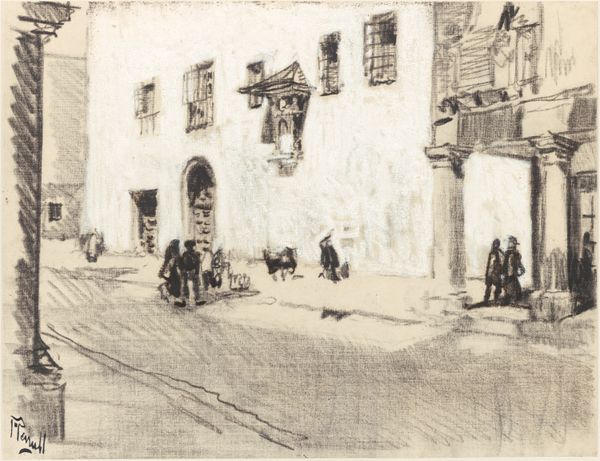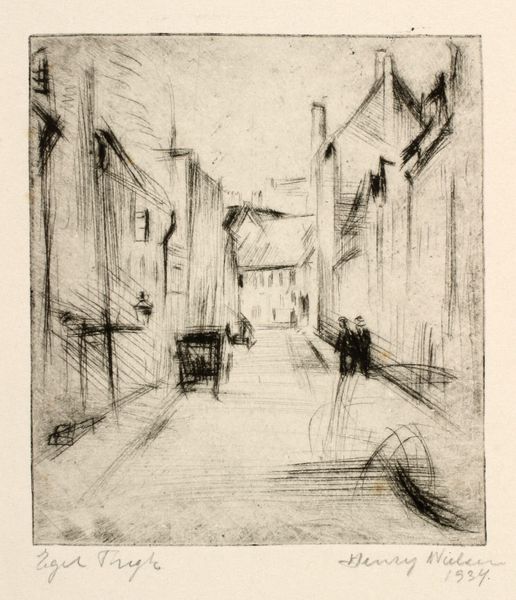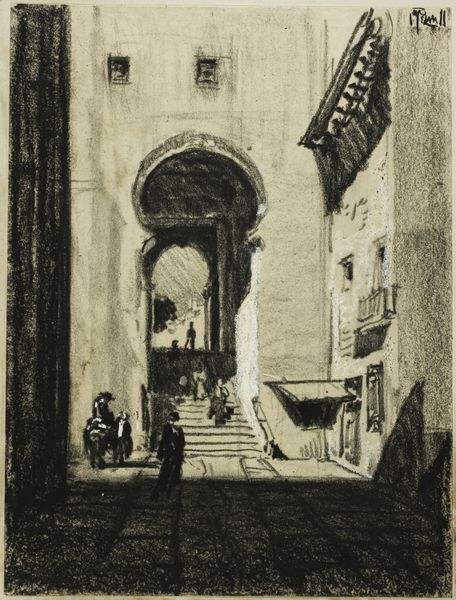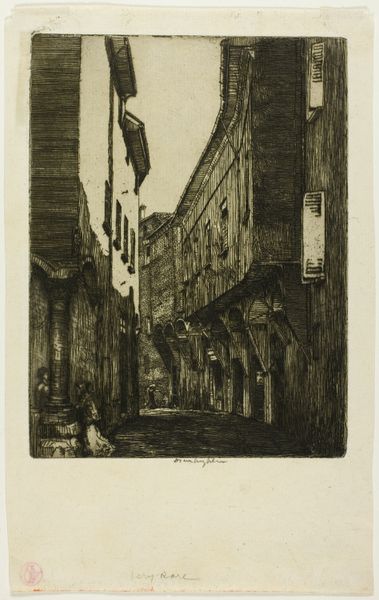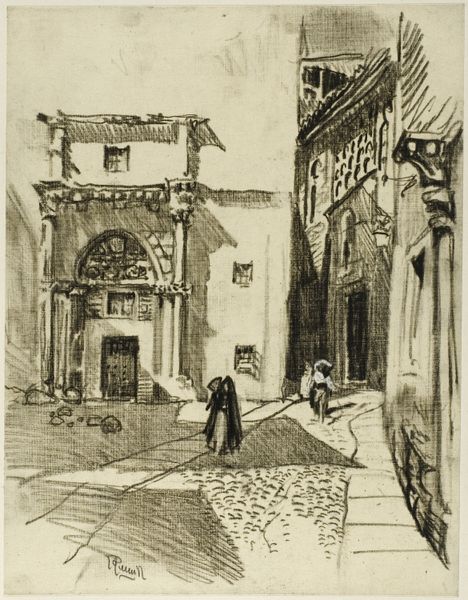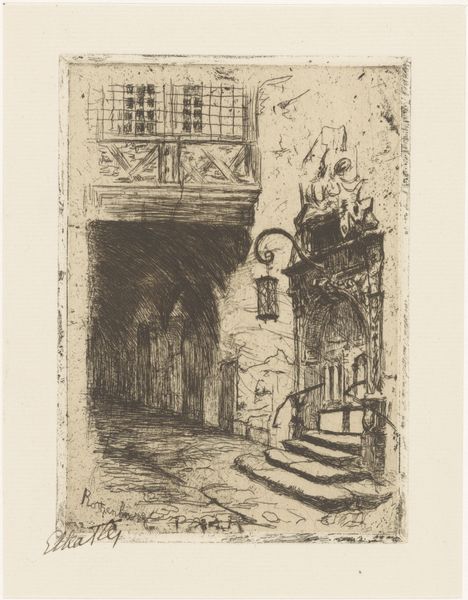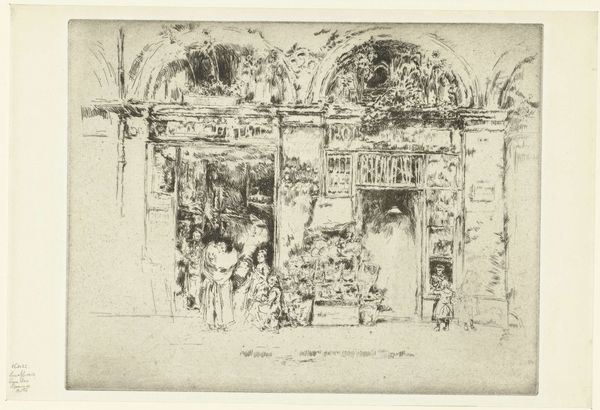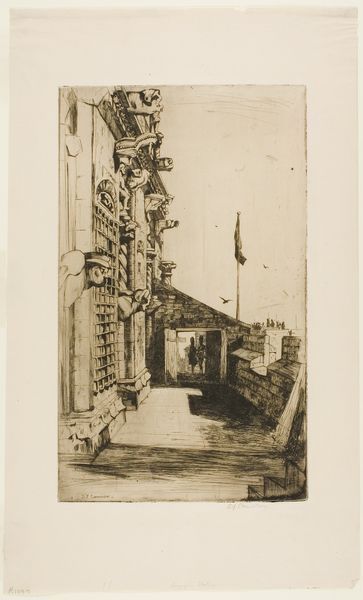
drawing, print, paper, pencil, chalk, charcoal
#
drawing
# print
#
pencil sketch
#
landscape
#
paper
#
pencil
#
chalk
#
cityscape
#
charcoal
Dimensions: 217 × 282 mm
Copyright: Public Domain
Curator: This is Joseph Pennell's "Toledo Streets," a print from around 1903, showcasing his distinctive cityscape style. Editor: There’s an immediate contrast in values that strikes me – stark blacks and radiant whites carve out these building facades with this dramatic and haunting effect. It almost feels staged. Curator: Pennell was deeply interested in how rapidly industrializing cities were changing. This print really captures the shifting urban landscape. Remember, this period witnessed massive shifts in wealth and power, impacting architectural styles and urban planning. Editor: It feels like more than just documentation. There’s an unease, a looming presence with those dark shadows that evokes questions around surveillance, exclusion, even oppression – especially when viewed in the light of the social strata of the time. Curator: Precisely. The architecture serves as a backdrop to explore themes of urban alienation, with the print emphasizing the isolating aspects of city life that emerged with modernization. The rapid growth of cities like Toledo forced individuals into more anonymous and often exploitative circumstances. Editor: I also keep considering those small architectural details above the doorways. The indecipherable writings on the wall are particularly evocative to me. Are they claiming ownership, religious statements, what exactly is going on in the shadows of Toledo society? Curator: Pennell often used prints to challenge existing social hierarchies, revealing the struggles of those marginalized by urban development and unchecked capital. In a way, Pennell acts as an early critic of gentrification, showcasing the displacement that shadows urban "progress." Editor: And the stark tonal divisions force a contemplation about how such sharp architectural divides often reflect societal inequalities – divisions that resonate today. Curator: Studying Pennell through an historical lens adds complexity to this image, doesn’t it? Editor: Yes, and considering it through the layers of urban theory amplifies it. Food for thought on our urban past, and, perhaps, present too.
Comments
No comments
Be the first to comment and join the conversation on the ultimate creative platform.
